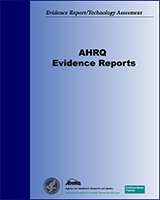NCBI Bookshelf. A service of the National Library of Medicine, National Institutes of Health.
Chesnut RM, Carney N, Maynard H, et al. Rehabilitation for Traumatic Brain Injury. Rockville (MD): Agency for Health Care Policy and Research (US); 1999 Feb. (Evidence Reports/Technology Assessments, No. 2.)
This publication is provided for historical reference only and the information may be out of date.
The authors thank the members of the Brain Injury Support Group of Portland for their support and the use of their library. They also thank the Portland State University Capstone students who volunteered their time to help with the project: Heather Brooks, Samantha Cohen, Justin Davis, Cynthia Davis-O'Reilly, Julie Geil, Cheryl Matsumura, and Jeana Schoonover.
The American Academy of Family Practice provided the model, its Clinical Policy Review Form, on which the authors based their review form for this report.
- Acknowledgments - Rehabilitation for Traumatic Brain InjuryAcknowledgments - Rehabilitation for Traumatic Brain Injury
- Mouse DNA sequence from clone RP23-227I2 on chromosome 4, complete sequenceMouse DNA sequence from clone RP23-227I2 on chromosome 4, complete sequencegi|20177288|emb|AL669949.11|Nucleotide
- RecName: Full=CAAX prenyl protease 1 homolog; AltName: Full=Farnesylated protein...RecName: Full=CAAX prenyl protease 1 homolog; AltName: Full=Farnesylated proteins-converting enzyme 1; Short=FACE-1; AltName: Full=Prenyl protein-specific endoprotease 1; AltName: Full=Zinc metalloproteinase Ste24 homologgi|78099980|sp|Q80W54.2|FACE1_MOUSEProtein
Your browsing activity is empty.
Activity recording is turned off.
See more...
